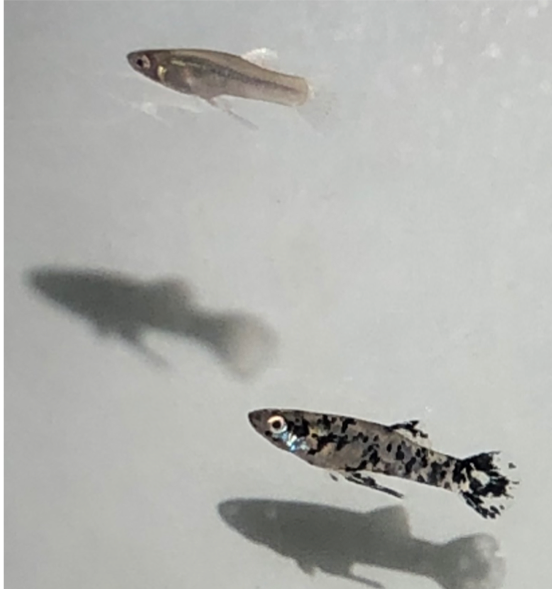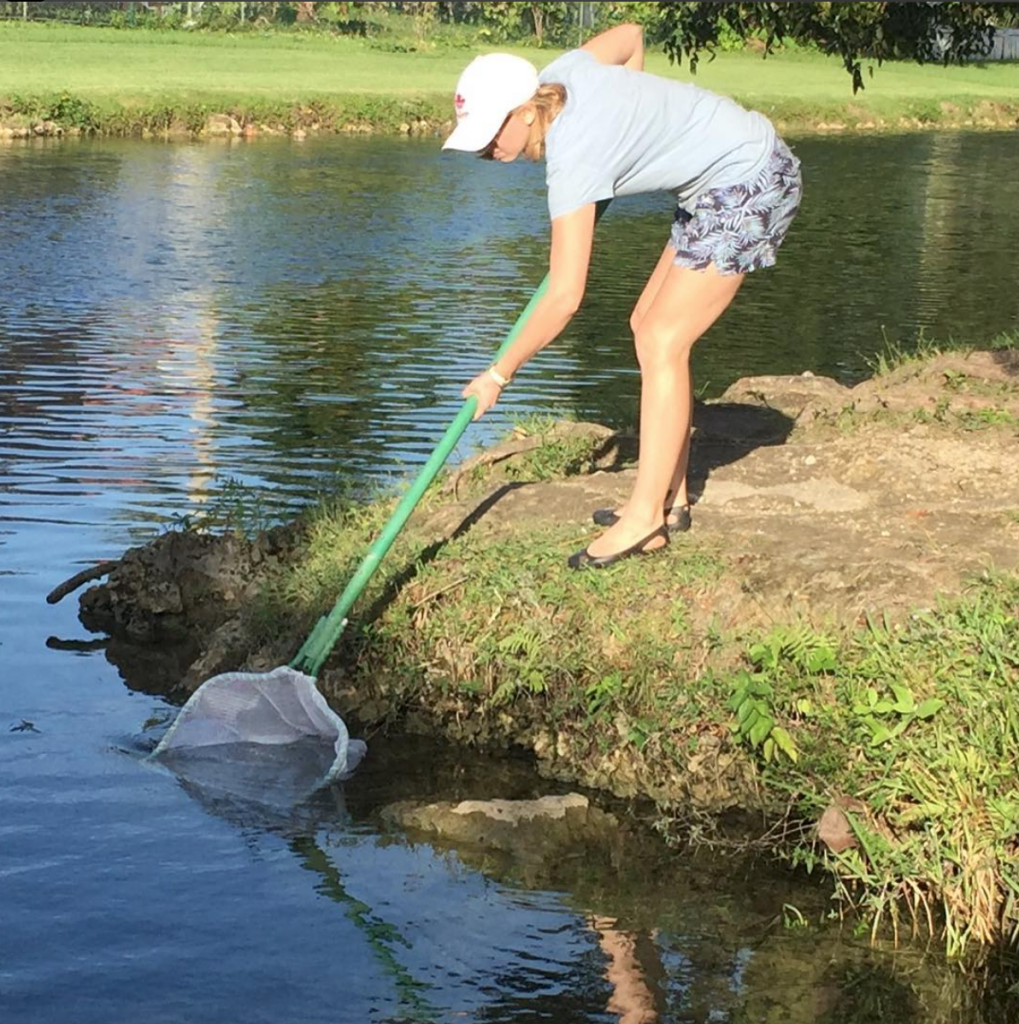On Fish, Color, and Social Behavior: Connecting Current Research to Historical Scientific Studies through Open Access Archives
Social orders exist throughout the animal kingdom. Comprised of dominant and subordinate individuals, these orders dictate how members of a group interact, influencing everything from food access to mating privileges.
Sometimes, the behavior of the dominant individual is more extreme, and the “alpha” actively inhibits interactions between other members of the group. This sort of “monarchistic dominance” has been reported in male laboratory mice and African lions. The behavior is not restricted to mammals, however.
In a 1962 study published in the Bulletin of the Southern California Academy of Sciences, researchers observed this monarchistic behavior in captive male mosquitofish. In a series of controlled experiments, the study authors witnessed a range of aggressive behaviors being used to establish the dominant individual, who then suppressed interactions between the remaining fish (Caldwell and Caldwell 1962).

Tanja Zerulla takes a moment to snap a selfie while catching Eastern Mosquitofish at Florida International University. Photo credit: Tanja Zerulla.
Tanja Zerulla, a Ph.D. candidate at Florida International University (FIU), is currently studying social behaviors in the Eastern Mosquitofish (Gambusia holbrooki). While her research is specifically looking at the role of color in social interactions, this 1962 study offered valuable insight into broader mosquitofish behavior. The Biodiversity Heritage Library (BHL) provided Zerulla with easy access to the publication.
“I’ve been working on defining the social behavior of male Eastern Mosquitofish color morphs,” explains Zerulla. “While reading, I found references to a few older articles about the genus (Gambusia) behavior. While looking on Google Scholar, I found the article ‘Monarchistic dominance in small groups of captive male mosquitofish, Gambusia affinis patruelis’ – and it linked me to BHL! I was able to read about how male fish interact with each other and now have a point of comparison for my own research.”
Zerulla has been studying fish biology for over six years. Her research passion is understanding the underlying causes of biological behavior. Zerulla’s undergraduate research included studies on the effects of chemicals and compounds in water systems on fish swimming behavior and the impact of nucleotides on fish feeding behavior. For her graduate work, Zerulla applied to several programs with leaders in the field of behavioral biology.
“In particular, I wanted to work with someone who studied behavior across biological levels – from genetics and physiology to ecology and evolution,” explains Zerulla. “I found my fit at Florida International University working for Dr. Philip Stoddard, where I now study how color pattern is linked to social behaviors in the Eastern Mosquitofish (Gambusia holbrooki).”

Male (Fig. 1) and female (Fig. 2) Eastern Mosquitofish (Gambusia holbrooki). Illustration from “Breeding habits of the viviparous fishes Gambusia holbrookii and Heterandria formosa” by William P. Seal. Published in Proceedings of the Biological Society of Washington, v. 24 (1911). https://s.si.edu/2JeW6PK.

Eastern Mosquitofish (Gambusia holbrooki) males swim in a laboratory aquarium. A silver male swims at the top while a melanistic (spotted) male swims below. Photo credit: Tanja Zerulla.
Zerulla first discovered BHL through Twitter several years ago, when she began following scientists and other graduate students on the platform.
“Some of the graduate students were tweeting about their efforts to transcribe field journals and label taxonomic images for BHL,” recalls Zerulla. “One of my first major interactions was helping someone figure out that the image they were working on was a fetal Squalus squalus (dogfish shark) and translating German on an image of an Axolotl.”
While she has just recently begun exploring how BHL can support her current research, Zerulla’s primary interactions with the Library still occur through social media, where the publications – and particularly scientific illustrations – shared through BHL’s feeds serve as a valuable source of inspiration and motivation.
“I love seeing the historical drawings of animals and plants! Seeing beautiful images drawn by people who were curious about the world reminds me of my own love for science,” affirms Zerulla. “Grad school can be overwhelming, so little reminders of my passion for natural history and science renews my energy for research.”

Tanja Zerulla standing in a cypress dome in Everglades National Park where she teaches students about the natural history of Florida plants and animals. Photo credit: Tanja Zerulla.
She finds these drawings so inspiring that she would love to have them displayed as a tab in the search results on the BHL website to allow easier discovery. But while she thoroughly enjoys these illustrations, for Zerulla, the best thing about BHL is its vast, open access collection.
“I was surprised but really pleased to see so much scientific literature available for free to the public,” lauds Zerulla. “I personally have pushed for open access releases of my published papers because I think that everyone – whether a scientist in the US or Indonesia, or a person who’s just really interested in fish – should be able to access scientific literature.”
We couldn’t agree more. We are proud to know that our commitment to open access is helping to advance global scientific research and inspire discovery of the natural world.
Follow Tanja Zerulla on Twitter at @TalkstoFish.
Reference
Caldwell, Melba C. and David K. Caldwell. 1962. “Monarchistic dominance in small groups of captive male mosquitofish, Gambusia affinis patruelis.” Bulletin of the Southern California Academy of Sciences 61: 37-43.






Leave a Comment